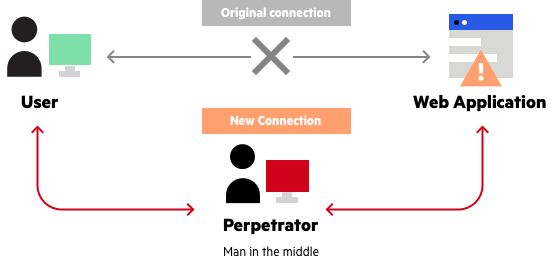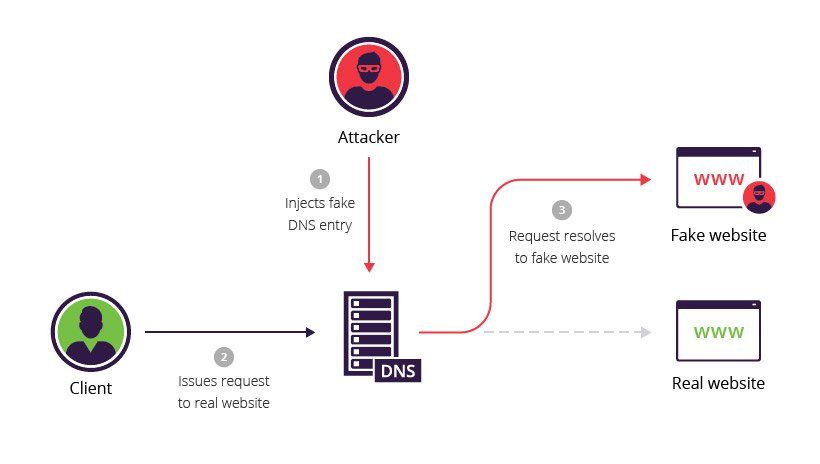A man in the middle (MITM) attack is a general term for when a perpetrator positions himself in a conversation between a user and an application—either to eavesdrop or to impersonate one of the parties, making it appear as if a normal exchange of information is underway.
The goal of an attack is to steal personal information, such as login credentials, account details and credit card numbers. Targets are typically the users of financial applications, SaaS businesses, e-commerce sites and other websites where logging in is required.
Information obtained during an attack could be used for many purposes, including identity theft, unapproved fund transfers or an illicit password change.
Additionally, it can be used to gain a foothold inside a secured perimeter during the infiltration stage of an advanced persistent threat (APT) assault.
Broadly speaking, a MITM attack is the equivalent of a mailman opening your bank statement, writing down your account details and then resealing the envelope and delivering it to your door.
2. Phishing
Phishing is a cybercrime in which a target or targets are contacted by email, telephone or text message by someone posing as a legitimate institution to lure individuals into providing sensitive data such as personally identifiable information, banking and credit card details, and passwords.
The information is then used to access important accounts and can result in identity theft and financial loss.
The first phishing lawsuit was filed in 2004 against a Californian teenager who created the imitation of the website “America Online”. With this fake website, he was able to gain sensitive information from users and access the credit card details to withdraw money from their accounts. Other than email and website phishing, there’s also 'vishing' (voice phishing), 'smishing' (SMS Phishing) and several other phishing techniques cybercriminals are constantly coming up with.
Keystroke logging, often referred to as keylogging or keyboard capturing, is the action of recording the keys struck on a keyboard, typically covertly, so that person using the keyboard is unaware that their actions are being monitored. Data can then be retrieved by the person operating the logging program.
Domain Name Server (DNS) spoofing (a.k.a. DNS cache poisoning) is an attack in which altered DNS records are used to redirect online traffic to a fraudulent website that resembles its intended destination.
Once there, users are prompted to login into (what they believe to be) their account, giving the perpetrator the opportunity to steal their access credentials and other types of sensitive information. Furthermore, the malicious website is often used to install worms or viruses on a user’s computer, giving the perpetrator long-term access to it and the data it stores.
Methods for executing a DNS spoofing attack include:
- Man in the middle (MITM) – The interception of communications between users and a DNS server in order to route users to a different/malicious IP address.
- DNS server compromise – The direct hijacking of a DNS server, which is configured to return a malicious IP address.






0 Comments: